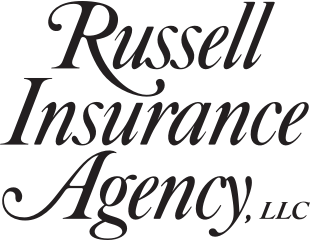As the United States population ages and retirement becomes a non-option for more and more of those in the workforce, age discrimination has become a real liability concern for every business. Twenty-three percent of the U.S. workforce in 2018 was composed of those 55 to 64 years of age, and almost 6% consisted of those 65 years of age and older, according to data from the Bureau of Labor Statistics (BLS).
By 2024, the labor force will grow to include 164 million people, of whom 41 million will be aged 55 or older, with about 13 million of them 65 or older, the BLS projects. These changing workforce demographics open the door to the possibility of more age discrimination claims.
According to the Equal Employment Opportunity Commission (EEOC), there were 16,911 charges filed for age discrimination in 2018, which accounted for $77 million in damage awards. One infamous age discrimination case involved an aerospace employee who was fired at age 66. After a four-day age discrimination trial, the jury found in favor of the former employee and awarded him more than $51 million. Of this total:
$520,000 was for back pay under the Age Discrimination in Employment Act (ADEA)
Another $520,000 was awarded because the back-pay damages were found to be willful and thus subject to doubling
$520,000 was awarded for pain and emotional distress
$50 million in punitive damages was assessed under the New Jersey Law Against Discrimination
Though a new trial was ordered on the specific issue of punitive damages, the overall numbers suggest that juries may hit companies hard when age discrimination is at issue.
The ADEA prohibits age discrimination against people age 40 and older. The law covers discrimination in any aspect of employment, which includes hiring, firing, pay, job assignments, promotions, layoffs, training, benefits and any other condition of employment. In addition to the ADEA, many states have enacted their own legislation to protect older workers from age discrimination.
EPLI protects you and your business
Employment practices liability insurance (EPLI) covers companies for a number of claims related to harassment and discrimination. EPLI insures against claims and lawsuits filed by current employees, former employees,and job candidates. Coverage also extends to your directors and officers, management personnel and employees as detailed in your policy.
EPLI can help with legal costs, settlements and judgments associated with claims filed against you or your business. According to the Insurance Information Institute, EPLI provides protection against employee lawsuits regarding:
Sexual harassment
Discrimination
Wrongful termination
Breach of employment contract
Negligent evaluation
Failure to employ or promote
Wrongful discipline
Deprivation of career opportunity
Wrongful infliction of emotional distress
Mismanagement of employee benefit plans
Historically, large companies needed to worry about age discrimination claims, but as the demographics of the workforce have changed, so has the range of lawsuits. Businesses of all sizes — from startups to Fortune 500 companies — now need to protect themselves from age discrimination claims. While larger companies traditionally secure stand-alone EPLI coverage, some insurers now allow smaller companies to add EPLI coverage to their business owner’s policy.
Preventing age discrimination
There are several ways you can protect your business from age discrimination before a claim is ever filed. According to the Insurance Information Institute and the EEOC, the following actions can help:;
Ensure your hiring and screening processes avoid both intentional and inadvertent age discrimination. When posting jobs online, include age-diverse photos or images to show the company’s commitment to attracting a multigenerational workforce. Managers and supervisors should use age-neutral questions during the interview process. Working with your human resources department to develop a standard interview questionnaire can help prevent age bias (and other types of bias) in the hiring process.
Post your company policy regarding age discrimination throughout the workplace and in employee handbooks.
Train employees on your procedure for reporting age discrimination. Take all complaints seriously and investigate them promptly and thoroughly.
Hold recurring training sessions for supervisors on the company's age bias policy.
Document all complaints of age discrimination and what the company is doing to address such claims.
Engage older workers. The EEOC states that employees 50 and older have the highest levels of engagement in the workplace. And high engagement correlates to high productivity. Ways to increase employee engagement include career counseling, development opportunities, reverse mentoring and flexible work options.
Incorporate diversity and inclusion programs to drive better organizational performance, higher levels of individual performance and lower employee turnover.
When the term “diversity” entered the corporate lexicon in the 1960s, it often served primarily as a lawsuit-avoidance strategy. But times have changed, and smart companies know that a truly diverse, inclusive workforce is beneficial in various ways.
Your company’s age discrimination policy is only as good as its execution and enforcement. And remember: Even the best policies and practices can never prevent all claims of age discrimination. Employment practices liability insurance will provide your business with the ability to mitigate financial damages resulting from an allegation or formal complaint.
If you have any questions about EPLI, contact your insurance professional, who can guide you through the process of designing a tailored risk management plan for you and your business.

